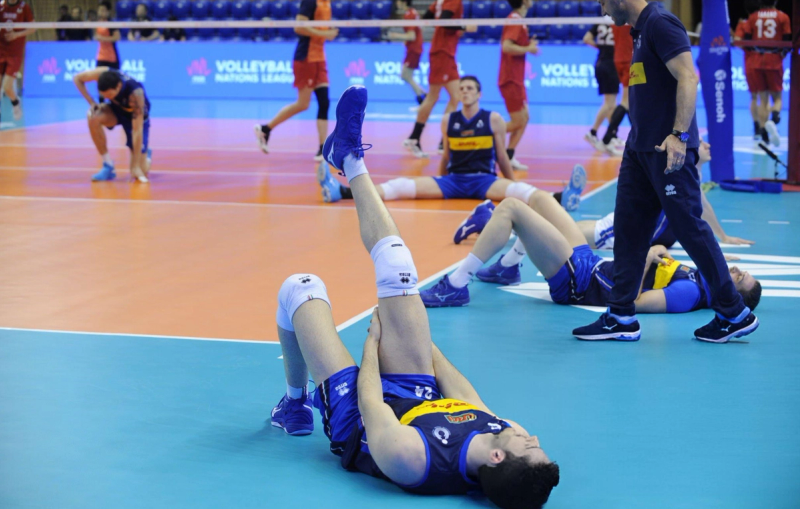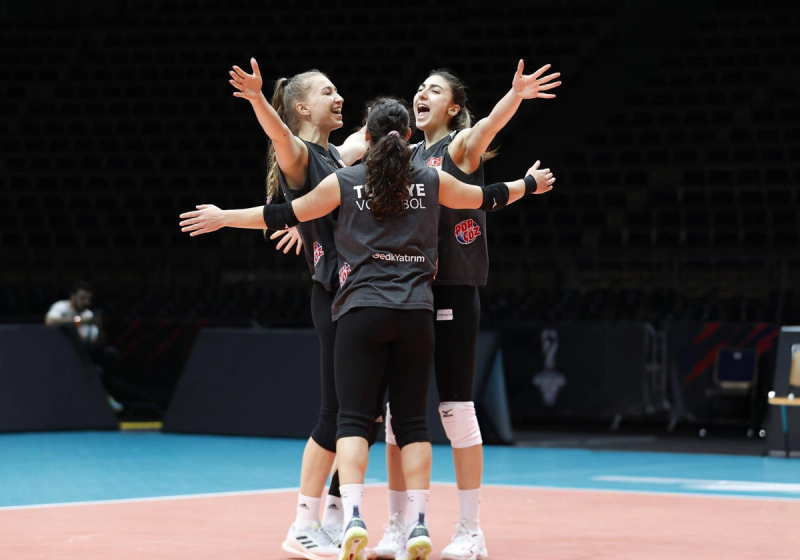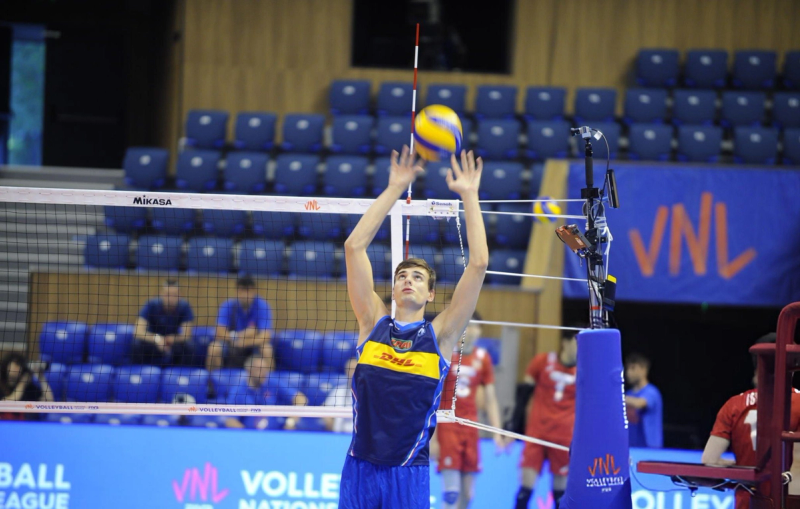
How to Train Properly as a Volleyball Player: 9 Proven Tips for Power, Speed & Recovery

Matt Nikishin
•
6th August, 2025
Introduction: Why Volleyball-Specific Training Matters
Volleyball isn’t just about jumping high or hitting hard—it’s about agility, stamina, and smart movement. Training properly as a volleyball player means focusing on game-specific conditioning, building functional strength, and understanding the role of recovery. Whether you’re preparing for a tryout or aiming to level up your performance, the right training plan can make all the difference.
This guide will walk you through the best conditioning, strength, and recovery tips designed specifically for volleyball athletes.
🔥 Conditioning Tips for Volleyball Players

Volleyball matches demand short bursts of energy, explosive movement, and fast recovery between rallies. Traditional cardio doesn’t quite match that demand—but High Intensity Interval Training (HIIT) does.
Why HIIT Mirrors Match Play
HIIT workouts mimic the pace of a volleyball game:
- Short, intense efforts like jumps, dives, and quick lateral moves
- Brief recovery periods that simulate time between points or rotations
3 Sample Conditioning Drills
Here are three volleyball-focused drills to add to your training:
1. Box Jumps
- How to: Jump on and off a 12-inch box for 30 seconds
- Rest: 15 seconds
- Benefit: Explosive leg power for blocking and hitting
2. Jump, Shuffle, Sprint
- Sequence: 3 squat jumps → 3 lateral shuffles (10 ft) → 3 sprints (20 ft)
- Rest: 30 seconds
- Benefit: Builds real-court footwork and stamina
3. Lateral Shuffles
- How to: Stay in an athletic stance and shuffle side-to-side for 30 seconds
- Rest: 15 seconds
- Benefit: Enhances lateral quickness and defensive readiness
💪 Strength Training for Explosive Volleyball Movement

Strength is what turns good players into great ones. It enhances:
- Jump height
- Serving and hitting velocity
- Injury prevention
Here are three volleyball-specific strength moves:
Dumbbell Squat to Overhead Press
- Focus: Full-body coordination and power
- How to: Squat with dumbbells and press overhead as you stand
- Why it works: Simulates vertical load and spike movement
Good Mornings
- Focus: Hamstrings, glutes, and lower back
- How to: With a barbell on your shoulders, hinge at the hips and return with control
- Why it works: Strengthens the posterior chain, key for powerful jumps and landings
Lateral Lunge with Press
- Focus: Core, legs, and upper-body control
- How to: Step sideways into a squat, press a weight forward, then return
- Why it works: Improves side-to-side stability, ideal for defense
🔄 Recovery Is Training, Too

One of the biggest mistakes volleyball players make? Skipping recovery.
Rest Day Guidelines
- Take 1–2 rest days per week to allow muscles to repair
- Use active recovery: light walking, yoga, or gentle swimming
- Prioritize sleep (at least 7–9 hours)
Nutrition & Hydration Advice
- Protein + carbs after workouts for recovery
- Hydrate consistently—don’t wait until you’re thirsty
- Include anti-inflammatory foods like leafy greens, berries, and omega-3s
Watch This Video To Train Properly as Volleyball Player:
🧠 How to Structure a Volleyball Training Week
Here’s a sample weekly split:
- Monday: Strength + light court skills
- Tuesday: HIIT conditioning
- Wednesday: Recovery / light skill work
- Thursday: Strength + positional drills
- Friday: HIIT + team play simulation
- Saturday: Match or competitive drills
- Sunday: Full rest or active recovery
Balance is key. Too much volume = burnout. Too little structure = plateau.
🚫 Common Training Mistakes to Avoid
- Overtraining: More isn't always better. Track fatigue levels.
- Skipping warm-ups: Increases injury risk and hurts performance.
- Using bad form: Quality reps beat heavy, sloppy reps every time.
- Ignoring mobility: Tight hips, ankles, or shoulders can hold you back.
✅ Conclusion: Consistent, Balanced Training Yields Long-Term Results

To train properly as a volleyball player, your program must be smart, specific, and sustainable. Focus on game-like conditioning, strength development, and regular recovery, and you’ll see gains—not just in performance, but in confidence and longevity.
Volleyball success starts in the gym, grows on the court, and holds strong through every match.
🎯 Want to See If Your Training Is Paying Off?
Feel like you’re training hard but not seeing results? Upload your match footage to Rewind and get real coaching feedback on your movement, timing, and decision-making.
📈 Track your progress. Adjust your focus. Perform like a pro.
🔗 Start now at TryRewind.co
📸 Click the image below to see your training in action.
